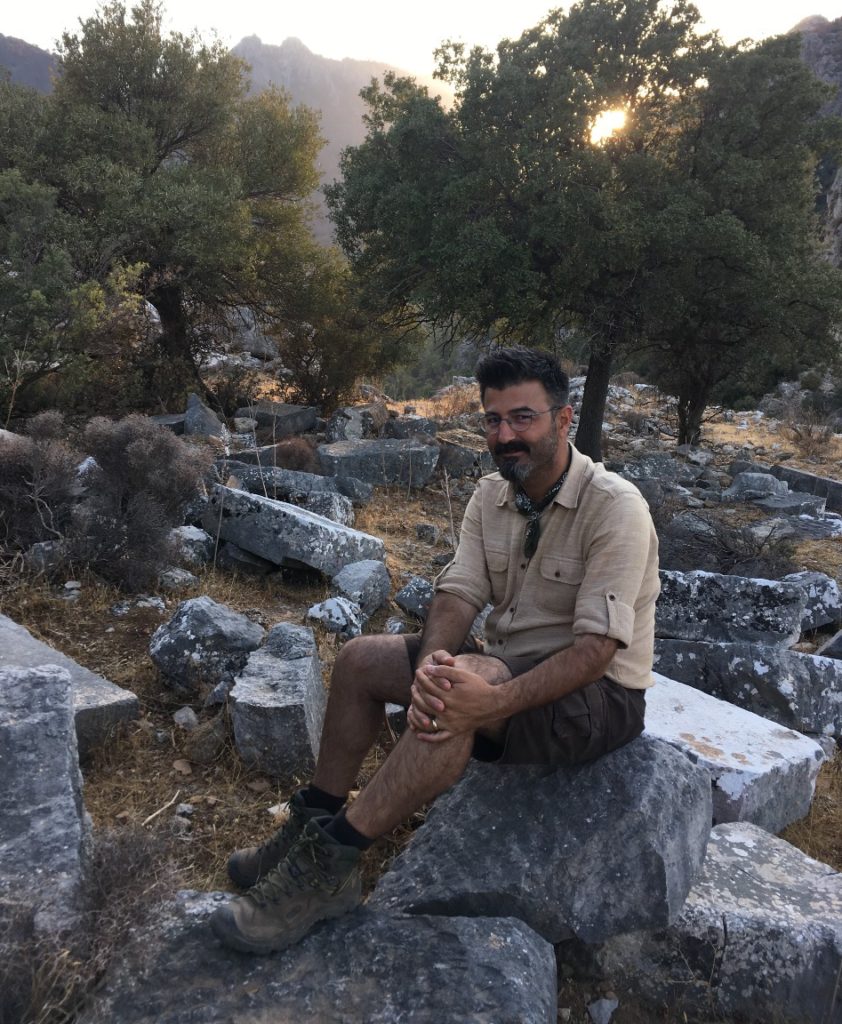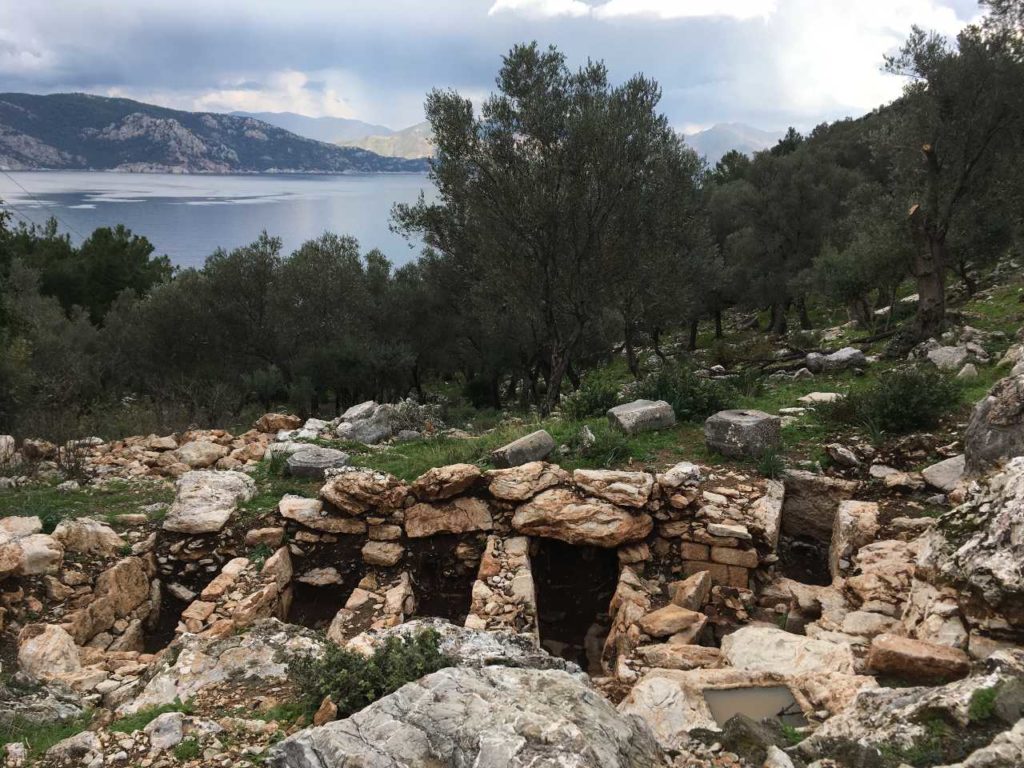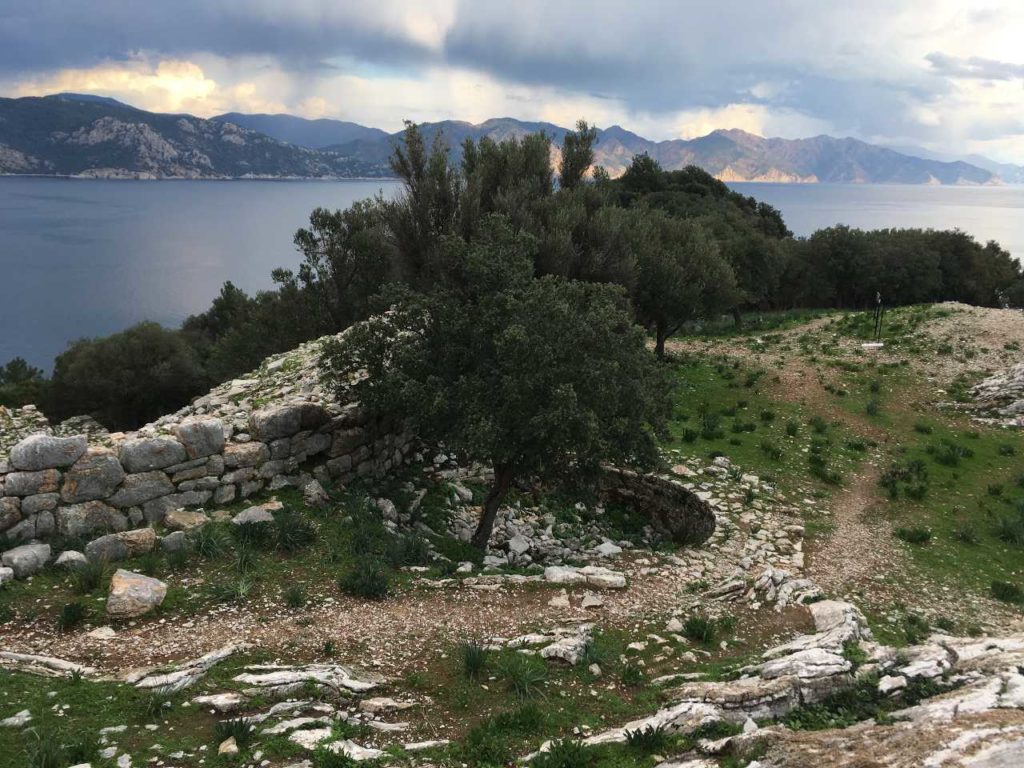2021 marked the first official season of legal excavations in Amos Ancient City near Marmaris, Muğla. This ancient settlement dates back to roughly 3,000 years ago. Amos is perched high above the sea with its biggest draws being the open-air theater and stunning panoramic views. Yet this archaeological site holds more than the human eye can see as what has been unearthed so far proves there is much more to be discovered. I had the pleasure to talk on site with the leader of the Amos excavations and research team, Professor/Dr. Mehmet Gürbüzer to learn more about Amos and the fascinating discovery that was revealed this excavation season.

Can you tell us a bit about yourself and your experience with archaeology?
Hello, yes. I have worked for nearly 25 years as an archaeologist and professor of archaeology at Muğla Sıtkı Koçman University.
Aside from Amos Ancient City, what other archaeological sites have you worked on?
I spent five years working at Klazomenai in Urla, Izmir, and 10 years at Aigai Ancient City in Manisa. So far, I’ve been working 3 years in Amos.
Why did you choose to work on this excavation? What interests you most about Amos?
I first visited Amos during a culture venture back in 2004. I like that Amos is a small, compact city plus the panorama is beautiful with forest, sea and history. Since my expertise lies with the Hellenistic Period, Amos seemed a perfect fit.

Why is Amos an important archaeological site?
The Amos territory extends far beyond this area. Where we are now, this is the main settlement of Amos, but the Amos hinterland includes present-day Turunç, Dereözu, Kumlubük, and Çiftlik, all the way down the Bozburun Peninsula. During the Hellenistic Period, Amos belonged to the island of Rhodes and was an important trade port between the island and surrounding areas.
Which people used this site and did people actually live here?
Amos has seen many cultures from the Luwians to the Carians and Greeks. People did live here. Beyond the theater towards the sea was a neighborhood. The wealthy lived at the top of the settlement with the best views, of course, and working-class civilians lived below.
What did people do here?
Many people of Amos were sea peoples, primarily sailors. Agriculture played an important role and created revenue for the people. Wine and olive oil were produced here and exported.

When was Amos last inhibited and what happened to the people of Amos?
Amos was last occupied in the 3rd century AD, the Roman Period. It’s still too early to tell why exactly the people of Amos abandoned this settlement. Earthquakes were prevalent in this region during ancient times and the strength of the earthquakes repeatedly destroyed the agricultural terraces in Amos and greatly affected the economy. To constantly restore and rebuild the structures in and around Amos likely became too much. It’s better to relocate and try to live somewhere new. This region has experienced a déjà vu. With the wildfires we had this summer, a majority of the land and ecosystems were destroyed in this area. This affected the bee farmers and devastated their livelihood. It will take around 50 years before honey production can thrive here the way it did up until now. So, what will they do? To continue this line of work to earn an income, they will need to move elsewhere. But, many of the bee farmers are elderly and relocating is not an option. There is a catastrophic tradition here.
Aside from the excavation carried out by British archaeologist George Bean in 1948, why has it taken so long for Amos to be properly excavated?
Other archaeologists attempted to excavate Amos, but permission is not easily granted. Since I work with Muğla University, it is more practical. Should a problem arise, I can easily come and go between the university and Amos. In this case, I was lucky to get the opportunity to work here.
Last year, your team performed an emergency excavation. Why was this so important and what did you discover?
Since treasure hunters had attempted an illegal dig, we wanted to try to salvage what was left of the area. We unearthed 10 graves that belonged to a prestigious family from the Hellenistic Period, around 2nd century BCE-2nd century AD. Aside from urns and skeletal remains, we also found osthotekler (sarcophagi) and an unguentarium (tear vessel/ perfume bottle).
What structures have you identified in Amos and what discoveries have you and your team made so far?
There is a sanctuary dedicated to Apollon Samnaios, an open-air theatre, a water cistern, a necropolis located on the north slope and fortification walls surrounding the settlement.
This excavation season, we discovered a temple dedicated to Athena at the very top level in Amos. We found marble fragments belonging to a cult statue, terracotta oil lamps, and fibulae. We also found potsherds that date back to the Early Iron Age, so Amos was occupied by humans even earlier than we had previously thought.
Your team discovered a stela in Kumlubük village (next to Amos) during last year’s archaeological survey. What is the connection between this stela and Amos?
In Kumlubük, we found an open-air sanctuary that was devoted to Chthonic (underworld) Gods. This sacred place was likely used by native people from an earlier time around the pre-Hellenistic Period.

The excavation season ends with an archaeological survey. What does this involve?
We explore the territories around Amos to see what else we may find. Walk the ancient paths in the forest and search for new paths. During last year’s survey, we discovered a watch tower beyond the Dionysus Hotel (Kumlubük) and other agricultural terraces along with an olive press and a natural water source. This particular area was in use up until the Roman Period. Apparently, there is another sanctuary high in the hills we have yet to discover. Our main goal is to hopefully find evidence of the borders of the Amos vicinity.
When will excavations resume in Amos and what do you hope for the next season?
Excavations will continue in Amos starting in July 2022. We plan to excavate the Apollon Samnaios sanctuary, the theatre and the civilian neighborhoods.
Eager to learn more about Amos Ancient City? Watch this episode of Taş Gaste (Stone Stories) that features Amos Ancient City.
Visit the Marmaris Museum to view artifacts discovered in Amos and learn more about the history of this region. Of course, the best way to experience Amos is to visit this ancient site yourself. Walk the land that breathes mystery and touch the stones with their many stories yet to be told.
Images courtesy of the author.








